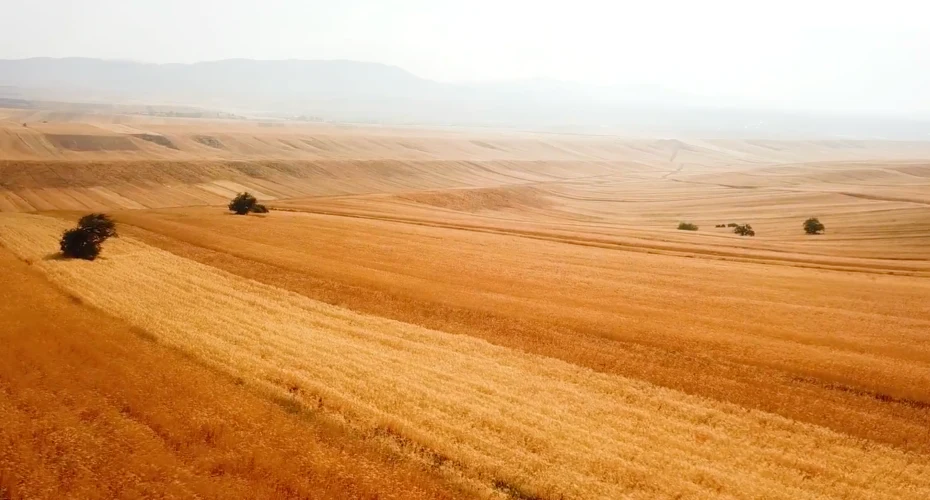The world’s subterranean water reserves, a crucial lifeline for billions, are vanishing at an alarming rate. Recent comprehensive research, which scrutinized millions of groundwater level readings from over 170,000 wells across 40-plus countries, paints a grim picture of our global water health.
This study, the first of its kind in scope and scale, aims to unravel the complex narrative of global groundwater levels. The research team, led by environmental pioneers like Debra Perrone and Scott Jasechko from the University of California, sought to understand humanity’s imprint on these precious reserves, whether by direct overexploitation or indirectly through climate change-induced rainfall alterations.


The Lifeblood of Arid Regions & The Toll of Diminishing Groundwater
In arid zones like northwest India and the American Southwest, groundwater isn’t just a resource; it’s a lifeline. Stored in aquifers – permeable rock formations riddled with pores and crevices – this hidden water is vital for drinking, agriculture, and sustaining life in regions where rain is a rarity.
As groundwater levels plummet, the consequences are dire. Communities struggle to quench their thirst or nourish their crops, leading to socioeconomic and environmental strains. The land itself isn’t immune, either; subsidence, the gradual sinking of the ground, becomes a very real threat.
Debra Perrone, in a news release, described the motivation behind their study: “This study was driven by curiosity. We wanted to better understand the state of global groundwater by wrangling millions of groundwater level measurements.” This relentless pursuit of knowledge led to disturbing findings, yet crucial for understanding and action.
A Global Snapshot of Decline
Between 2000 and 2022, a staggering 71% of the 1,693 aquifers examined were losing water. In over a third of these, the decline exceeded 0.1 meters annually. The Ascoy-Soplamo Aquifer in Spain emerged as the most rapidly depleting, losing a median of 2.95 meters each year. Iran’s aquifers also feature prominently on this alarming list.
While comprehensive, the study has its blind spots. Vast regions of Africa, South America, and Southeast Asia remain uncharted due to sparse monitoring infrastructure. Nonetheless, the research encompasses the most critical areas of global groundwater extraction, providing a significant, though incomplete, overview.

The American Angle
For Americans, particularly in the Southwest, this study is a wake-up call. The region, already grappling with water scarcity, faces increased risk as these subterranean reserves dwindle. It’s a stark reminder that water conservation and sustainable management are no longer optional but essential for survival and prosperity.
Amid alarming global trends, there are beacons of hope. The study spotlights inspiring examples like Bangkok, Arizona, and New Mexico. Here, concerted efforts to regulate water use and replenish aquifers have led to a reversal of fortune, with groundwater levels showing signs of recovery.
In the American Southwest, the conversation around water has shifted from theoretical to critical. The region, known for its arid landscapes and sprawling deserts, is experiencing a groundwater crisis that’s no longer a distant threat but a present-day challenge. The situation is dire, with groundwater levels plummeting due to a combination of prolonged drought, exacerbated by climate change, and unsustainable water consumption.
Arizona epitomizes this crisis.
The state has been engulfed in severe drought since the early 2000s, and the situation is worsening. The impact on development is significant. For instance, the Teravalis project in Arizona, a massive 37,000-acre development plan, faced significant obstacles due to water scarcity. Initially slated to rely on the Hassayampa Basin aquifer, new developments in the area have been limited, reflecting the state’s intensifying focus on water supply and sustainability.

Moreover, innovative solutions like those implemented in Verrado, a community in Buckeye, Arizona, highlight the shifting paradigm in water management. This planned community features a water recycling system capable of treating 1.5 million gallons of wastewater daily, which is then used for irrigation, showcasing a sustainable approach to water use in arid regions.
The US Geological Survey points out that groundwater depletion isn’t just a problem in the arid West; it’s a nationwide issue. Groundwater serves as a critical resource for about half the U.S. population and a substantial portion of agricultural needs. However, excessive pumping, especially during droughts, is leading to dry wells and lowering the water table across the country.
In areas like the Atlantic Coastal Plain and West-Central Florida, similar challenges are emerging.
Coastal regions are facing saltwater intrusion, while inland areas experience reduced stream flows and sinking land due to land subsidence. These aren’t isolated incidents, but part of a broader pattern of groundwater stress affecting various parts of the nation.
The Southwest’s response to this crisis can be a blueprint for other regions.
Conservation efforts and innovative water management strategies, such as water recycling and recharging aquifers, are becoming imperative. Moreover, the increased costs of pumping water from greater depths serve as a financial incentive to conserve and manage water resources more effectively.
The situation in the Southwest, particularly in states like Arizona, serves as a powerful reminder of the need for sustainable water use. It’s a call to action for communities, policymakers, and individuals alike to rethink how we use and manage this precious resource. As we face the realities of climate change and its impact on water availability, the lessons learned here will be invaluable for ensuring a water-secure future.

Innovative Solutions & Accelerating Declines
Scott Jasechko, expressed admiration for the ingenious approaches adopted in these regions. “I was impressed by the clever strategies that have been put into action to address groundwater depletion in several places, though, these ‘good news’ stories are very rare,” he said. These stories, while few, demonstrate the potential for positive change through smart policy and community action.
The team didn’t stop at analyzing current data. They delved into historical records, comparing groundwater levels from 1980 to 2000 with those in the 21st century for 542 aquifers. Their findings were concerning: 30% of these aquifers experienced accelerated declines in the last two decades, surpassing the rate of depletion observed in the previous 20 years. This pattern, according to the study, is more pronounced than what would be expected from random fluctuations, indicating a worrying trend.
Donald John MacAllister, a hydrologist at the British Geological Survey not involved in the study, praised the breadth of the data, acknowledging its significance. “I think it’s fair to say this global compilation of groundwater data hasn’t been done, certainly on this scale, at least to my knowledge, before,” he stated. He emphasizes the crucial yet often overlooked role of groundwater, urging policymakers to acknowledge and protect this vital resource as a key to building resilience and adapting to climate change.
Out of Sight, Not Out of Mind
Groundwater’s invisibility is both its greatest asset and its Achilles’ heel. It’s a resource that quietly supports ecosystems and communities, yet its concealment beneath the earth’s surface often leads to neglect. As MacAllister points out, the challenge lies in keeping groundwater in the collective consciousness of both the public and policymakers.
As we conclude our exploration of the global groundwater situation, it’s clear that the issue is multifaceted. It’s a tale of alarming decline, innovative solutions, and the urgent need for greater visibility and action. From the parched farmlands of India to the bustling streets of Bangkok, the health of our groundwater reserves is a barometer of our collective future. It’s a resource we must vigilantly guard and sustainably manage, for it underpins not just our survival, but the very health of our planet.
The Next Steps in Groundwater Conservation
More To Discover
- Self-Heating Concrete Could Save Billions by Melting Snow Without Salt or Effort
- EPA Takes Action to Reduce Water Pollution from Meat Processing Facilities
- New Study Reveals The US Cities Facing Increased Flood Risk from Sinking Land and Sea Level Rise
- Sweet Sorrow: Climate Crisis Drives Sugar Prices to Record Highs, Impacting Desserts Worldwide
As we move forward, the key lies in learning from success stories, understanding the intricacies of groundwater science, and taking bold, coordinated steps to safeguard this hidden treasure. It’s a call to action for everyone – from individual citizens to global leaders – to prioritize and protect our subterranean water reserves for generations to come.
Source: Nature Communications





















